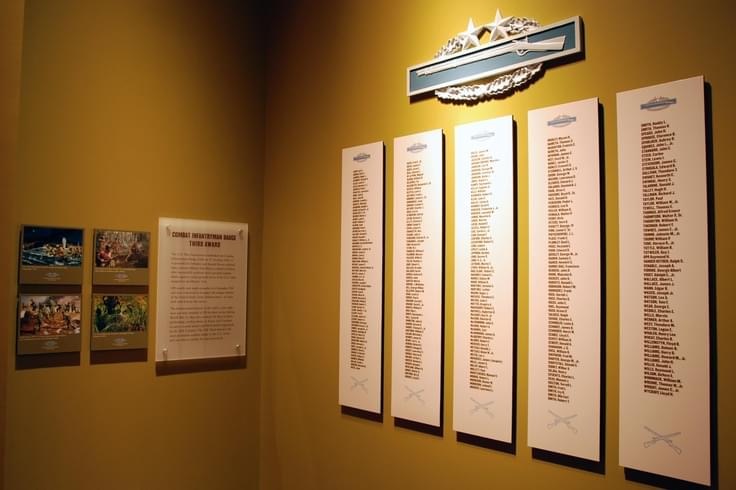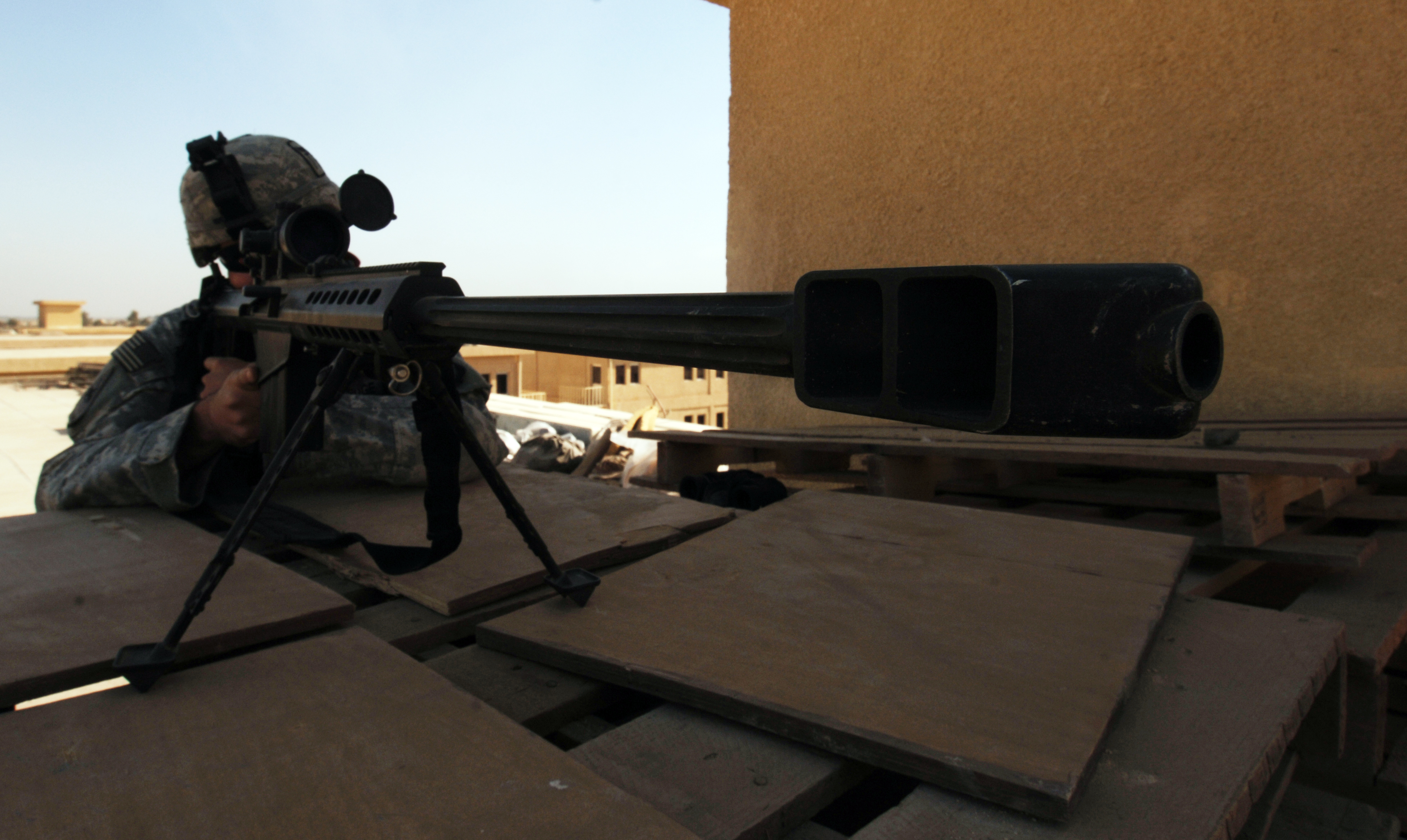|
Richard Allen Penry
Richard Allen Penry (November 18, 1948 – May 9, 1994) was a United States Army soldier and a recipient of the United States military's highest decoration—the Medal of Honor—for his actions in the Vietnam War. Biography Born in Petaluma, California, Penry joined the Army from Oakland, California in March 1969, and by January 31, 1970, was serving as a Sergeant in Company C, 4th Battalion, 12th Infantry Regiment, 199th Infantry Brigade. On that day, in Binh Tuy Province of the Republic of Vietnam, his unit came under an intense enemy attack. After the company commander was wounded, Penry helped organize the defense of the area and repeatedly exposed himself to enemy fire to retrieve supplies and return fire. He was honorably discharged from the Army in March 1971. Penry died at age 45 and was buried in Cypress Hill Memorial Park in Petaluma. Penry has two namesakes in his hometown: a park that was renamed in his honor, and a small military museum, the Sgt. Richard Penry ... [...More Info...] [...Related Items...] OR: [Wikipedia] [Google] [Baidu] |
Petaluma, California
Petaluma (Miwok languages, Miwok: ''Péta Lúuma'') is a city in Sonoma County, California, Sonoma County, California, located in the North Bay (San Francisco Bay Area), North Bay region of the San Francisco Bay Area. Its population was 59,776 according to the 2020 United States census, 2020 census. Petaluma's name comes from the Miwok village named ''Péta Lúuma'', that was located on the banks of the Petaluma River. The modern city originates in Rancho Petaluma, granted in 1834 to famed Californio statesman Mariano Guadalupe Vallejo, considered to be the founder of Petaluma. Today, Petaluma is known for its well-preserved historic center and as a local hub for the Petaluma Valley region of Sonoma County.Kay Ransom, C. Michael Hogan, Ballard George et al., ''Environmental Impact Report for the Petaluma General Plan'', prepared by Earth Metrics Inc. for the city of Petaluma (1984), History The Coast Miwok resided throughout Marin County, Marin and southern Sonoma County, Cal ... [...More Info...] [...Related Items...] OR: [Wikipedia] [Google] [Baidu] |
Ambush
An ambush is a long-established military tactics, military tactic in which a combatant uses an advantage of concealment or the element of surprise to attack unsuspecting enemy combatants from concealed positions, such as among dense underbrush or behind mountaintops. Ambushes have been used consistently throughout history, from ancient warfare, ancient to modern warfare. In the 20th century, an ambush might involve thousands of soldiers on a large scale, such as over a choke point such as a mountain pass, or a small irregulars band or insurgent group attacking a Regular army, regular armed force patrols. Theoretically, a single well-armed and concealed soldier could ambush other troops in a surprise attack. Sometimes an ambush can involve the exclusive or combined use of improvised explosive devices, that allow the attackers to hit enemy convoys or patrols while minimizing the risk of being exposed to return fire. History This use by early people of ambushing may date as far ... [...More Info...] [...Related Items...] OR: [Wikipedia] [Google] [Baidu] |
Combat Infantryman Badge
The Combat Infantryman Badge (CIB) is a United States Army military decoration. The badge is awarded to infantrymen and Special Forces soldiers in the rank of colonel and below, who fought in active ground combat while assigned as members of either an Infantry or Special Forces unit of brigade size or smaller at any time after 6 December 1941. For those soldiers who are not members of an infantry, or Special Forces unit, the Combat Action Badge (CAB) is awarded instead. For soldiers with an MOS in the medical field they would, with the exception of a Special Forces Medical Sergeant (18D), receive the Combat Medical Badge. 18D Special Forces Medics would receive the Combat Infantryman badge instead. The CIB and its non-combat contemporary, the Expert Infantryman Badge (EIB), were created in November 1943 during World War II to boost morale and increase the prestige of service in the Infantry. Specifically, it recognizes the inherent sacrifices of all infantrymen, and that they f ... [...More Info...] [...Related Items...] OR: [Wikipedia] [Google] [Baidu] |
Bronze Oakleaf-3d
Bronze is an alloy consisting primarily of copper, commonly with about 12–12.5% tin and often with the addition of other metals (including aluminium, manganese, nickel, or zinc) and sometimes non-metals, such as phosphorus, or metalloids such as arsenic or silicon. These additions produce a range of alloys that may be harder than copper alone, or have other useful properties, such as strength, ductility, or machinability. The archaeological period in which bronze was the hardest metal in widespread use is known as the Bronze Age. The beginning of the Bronze Age in western Eurasia and India is conventionally dated to the mid-4th millennium BCE (~3500 BCE), and to the early 2nd millennium BCE in China; elsewhere it gradually spread across regions. The Bronze Age was followed by the Iron Age starting from about 1300 BCE and reaching most of Eurasia by about 500 BCE, although bronze continued to be much more widely used than it is in modern times. Because historical artworks wer ... [...More Info...] [...Related Items...] OR: [Wikipedia] [Google] [Baidu] |
Combat Infantry Badge
The Combat Infantryman Badge (CIB) is a United States Army military decoration. The badge is awarded to infantrymen and Special Forces soldiers in the rank of colonel and below, who fought in active ground combat while assigned as members of either an Infantry or Special Forces unit of brigade size or smaller at any time after 6 December 1941. For those soldiers who are not members of an infantry, or Special Forces unit, the Combat Action Badge (CAB) is awarded instead. For soldiers with an MOS in the medical field they would, with the exception of a Special Forces Medical Sergeant (18D), receive the Combat Medical Badge. 18D Special Forces Medics would receive the Combat Infantryman badge instead. The CIB and its non-combat contemporary, the Expert Infantryman Badge (EIB), were created in November 1943 during World War II to boost morale and increase the prestige of service in the Infantry. Specifically, it recognizes the inherent sacrifices of all infantrymen, and that they f ... [...More Info...] [...Related Items...] OR: [Wikipedia] [Google] [Baidu] |
Helicopter
A helicopter is a type of rotorcraft in which lift and thrust are supplied by horizontally spinning rotors. This allows the helicopter to take off and land vertically, to hover, and to fly forward, backward and laterally. These attributes allow helicopters to be used in congested or isolated areas where fixed-wing aircraft and many forms of STOL (Short TakeOff and Landing) or STOVL (Short TakeOff and Vertical Landing) aircraft cannot perform without a runway. In 1942, the Sikorsky R-4 became the first helicopter to reach full-scale production.Munson 1968.Hirschberg, Michael J. and David K. Dailey"Sikorsky". ''US and Russian Helicopter Development in the 20th Century'', American Helicopter Society, International. 7 July 2000. Although most earlier designs used more than one main rotor, the configuration of a single main rotor accompanied by a vertical anti-torque tail rotor (i.e. unicopter, not to be confused with the single-blade monocopter) has become the most comm ... [...More Info...] [...Related Items...] OR: [Wikipedia] [Google] [Baidu] |
Sniper
A sniper is a military/paramilitary marksman who engages targets from positions of concealment or at distances exceeding the target's detection capabilities. Snipers generally have specialized training and are equipped with high-precision rifles and high-magnification optics, and often also serve as scouts/observers feeding tactical information back to their units or command headquarters. In addition to long-range and high-grade marksmanship, military snipers are trained in a variety of special operation techniques: detection, stalking, target range estimation methods, camouflage, tracking, bushcraft, field craft, infiltration, special reconnaissance and observation, surveillance and target acquisition. Etymology The name "sniper" comes from the verb "to snipe", which originated in the 1770s among soldiers in British India in reference to shooting snipes, a wader that was considered an extremely challenging game bird for hunters due to its alertness, camouflaging color ... [...More Info...] [...Related Items...] OR: [Wikipedia] [Google] [Baidu] |
Hand Grenade
A grenade is an explosive weapon typically thrown by hand (also called hand grenade), but can also refer to a shell (explosive projectile) shot from the muzzle of a rifle (as a rifle grenade) or a grenade launcher. A modern hand grenade generally consists of an explosive charge ("filler"), a detonator mechanism, an internal striker to trigger the detonator, and a safety lever secured by a cotter pin. The user removes the safety pin before throwing, and once the grenade leaves the hand the safety lever gets released, allowing the striker to trigger a primer that ignites a fuze (sometimes called the delay element), which burns down to the detonator and explodes the main charge. Grenades work by dispersing fragments (fragmentation grenades), shockwaves (high-explosive, anti-tank and stun grenades), chemical aerosols (smoke and gas grenades) or fire ( incendiary grenades). Fragmentation grenades ("frags") are probably the most common in modern armies, and when the word ''gre ... [...More Info...] [...Related Items...] OR: [Wikipedia] [Google] [Baidu] |
Battalion
A battalion is a military unit, typically consisting of 300 to 1,200 soldiers commanded by a lieutenant colonel, and subdivided into a number of companies (usually each commanded by a major or a captain). In some countries, battalions are exclusively infantry, while in others battalions are unit-level organizations. The word battalion came into the English language in the 16th century from the French language ( French: ''bataillon'' meaning "battle squadron"; Italian: ''battaglione'' meaning the same thing; derived from the Vulgar Latin word ''battalia'' meaning "battle" and from the Latin word ''bauttere'' meaning "to beat" or "to strike"). The first use of the word in English was in the 1580s. Description A battalion comprises two or more primary mission companies which are often of a common type (e.g., infantry, tank, or maintenance), although there are exceptions such as combined arms battalions in the U.S. Army. In addition to the primary mission companies, a battal ... [...More Info...] [...Related Items...] OR: [Wikipedia] [Google] [Baidu] |
Radio
Radio is the technology of signaling and communicating using radio waves. Radio waves are electromagnetic waves of frequency between 30 hertz (Hz) and 300 gigahertz (GHz). They are generated by an electronic device called a transmitter connected to an antenna which radiates the waves, and received by another antenna connected to a radio receiver. Radio is very widely used in modern technology, in radio communication, radar, radio navigation, remote control, remote sensing, and other applications. In radio communication, used in radio and television broadcasting, cell phones, two-way radios, wireless networking, and satellite communication, among numerous other uses, radio waves are used to carry information across space from a transmitter to a receiver, by modulating the radio signal (impressing an information signal on the radio wave by varying some aspect of the wave) in the transmitter. In radar, used to locate and track objects like aircraft, ships, spacecraf ... [...More Info...] [...Related Items...] OR: [Wikipedia] [Google] [Baidu] |








